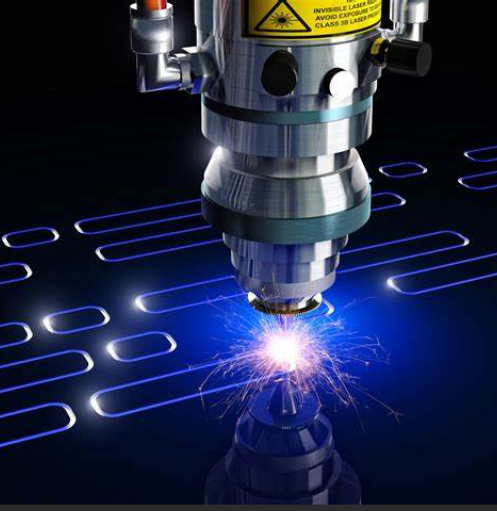Laser: The quantum magic for humans to weave light
In the Mojave Desert of California, a group of astronomers are shooting laser beams with a diameter of 10 meters into the night sky. This green beam of light is not intended to compete with the stars, but to enable telescopes to capture a clearer picture of the universe than the Hubble image by measuring atmospheric turbulence. The essence of this beam of light is precisely one of the greatest inventions of the 20th century - the laser. Its birth was not accidental but an ultimate collaboration that spanned the long river of wisdom among physicists, engineers and materials scientists.
Act One: The Forgotten "Ghost Theory
In 1917, Einstein deduced a set of equations in his office at the University of Berlin, predicting the existence of "stimulated emission". This phenomenon, then known as the "theoretical ghost", describes how photons, like dominoes, trigger atoms to release "clones" that perfectly replicate themselves. However, this discovery remained silent for nearly 30 years - because no one could find a way to make the atomic army collectively "defect".
It was not until a spring night in 1951 that Charles Tows of Columbia University had a sudden realization while sitting on a park bench: bombarding ammonia molecules with electromagnetic waves of a specific frequency could make the number of high-energy state particles exceed that of low-energy states, forming an "energy seesaw". This phenomenon, known as "particle number inversion", was finally achieved in the microwave band, giving rise to the first microwave laser (Maser). But the scientific community soon realized that shortening the wavelength by a million times to the visible light range would trigger a technological revolution.
Act Two: The Photon Cage Within the Ruby
In 1960, Theodore Maiman's laboratory was filled with ruby crystals that had been sentenced to "death" by other scientists. At that time, the mainstream theory held that the energy level transition efficiency of rubies was too low, but Maiman discovered that chromium ions would undergo a unique "three-level transition" under strong light excitation. He wrapped the red gemstone column with a spiral xenon lamp, as if confining a rainbow with lightning. Eventually, he plated silver at both ends of the crystal to form a "photon echo wall".
In this device, which is only the size of a pencil, photons travel back and forth at a speed of 300 million times per second. Each time it passes through the chromium ion array, new stimulated radiation is triggered, and the light intensity increases exponentially. When the torrent of escaping photons broke through the semi-permeable silver film, humans witnessed for the first time a deep red laser with spatio-temporal coherence - its monochromaticity was 100,000 times purer than that of sunlight, and its divergence Angle was only one-thousandth of that of a searchlight.
Act 3: The Dance of Light at the Nanoscale
Laser technology in the 21st century has broken through the limitations of macroscopic materials. In the semiconductor laboratory, engineers have grown quantum well structures on gallium arsenide substrates that are only one ten-thousandth of a human hair through molecular beam epitaxy technology. When the current passes through these nanoscale interlayers, the photons released by the recombination of electrons and holes in the potential well are precisely captured by the Bragg reflector, forming a miniature laser with an efficiency of over 90%.
Even more astonishing is the breakthrough in "topological lasers" : photons travel along a spiral path on the material surface, like luminous ants running on a Mobius strip, completely immune to the scattering loss of traditional lasers. This structure even enables the laser to be transmitted lossless in the waveguide bent into a knot, bringing a revolution to photonic chips.
Act Four: The Magic Beam That Rewrites Reality
Beside the "China Sky Eye" radio telescope in Guizhou, a superconducting nanowire single-photon detector is using lasers to interpret the cosmic microwave background radiation from 13.7 billion light years away. When each photon arrives, it triggers a quantum phase transition in the superconducting material, which is captured by a laser interferometer with a signal change of one millionth of a nanosecond.
In the medical field, femtosecond lasers have transformed into "shadowless light knives", engraving micron-sized lenses on the cornea at a speed thousands of times faster than that of neurons, correcting vision without disturbing the surrounding tissues. In 2023, the "photoacoustic laser therapy" emerged: gold nanorods absorb near-infrared lasers to generate local plasma resonance, precisely blasting cancer cells without harming healthy cells.
From Einstein's prediction to Maiman's ruby flash, from laboratory wonders to handheld devices, the evolution history of lasers is essentially a history of human manipulation of the quantum state of light.

 EN
EN
 AR
AR
 BG
BG
 CS
CS
 DA
DA
 NL
NL
 FI
FI
 FR
FR
 DE
DE
 EL
EL
 IT
IT
 JA
JA
 KO
KO
 NO
NO
 PL
PL
 PT
PT
 RO
RO
 RU
RU
 ES
ES
 SV
SV
 TL
TL
 ID
ID
 LV
LV
 SR
SR
 SK
SK
 SL
SL
 UK
UK
 VI
VI
 SQ
SQ
 ET
ET
 HU
HU
 TH
TH
 TR
TR
 FA
FA
 GA
GA
 BE
BE
 AZ
AZ
 KA
KA
 LA
LA
 UZ
UZ

